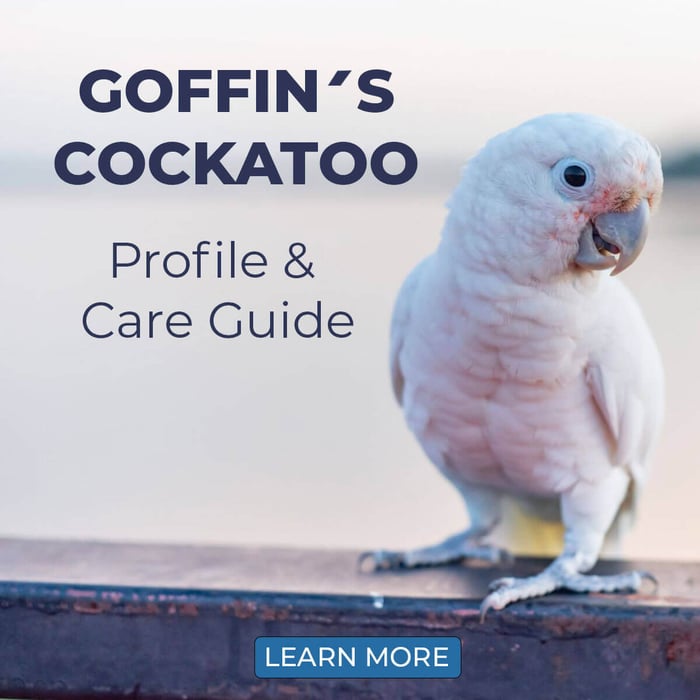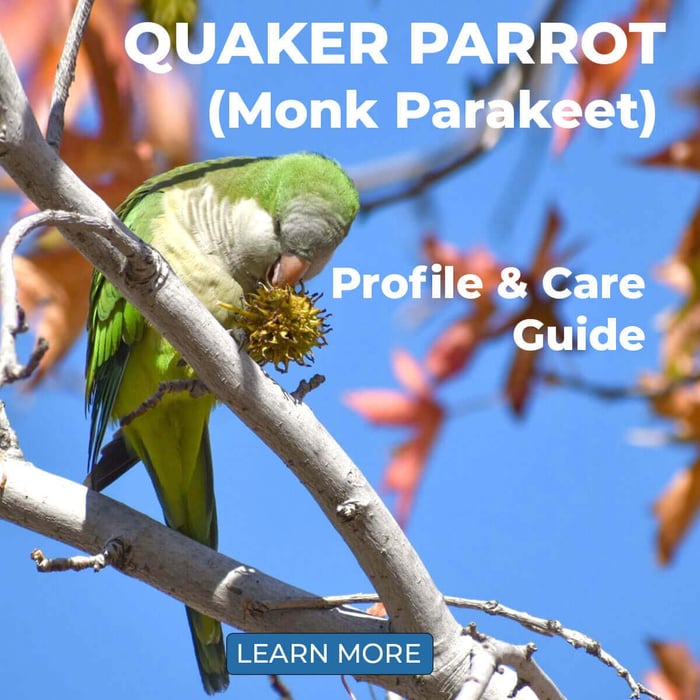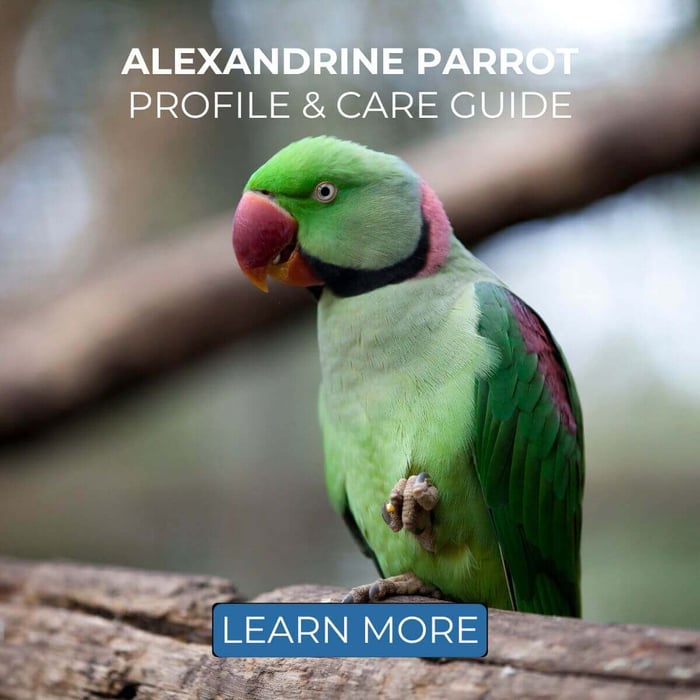Budgie (Budgerigar) – Profile & Care Guide
| Common name: | Budgie, budgerigar |
| Scientific name: | Melopsittacus undulatus |
| Length: | 18-20 cm (7-7.8 in) |
| Weight: | 22-32 gr (0.8-1.1 oz) |
| Lifespan: | 6-18 years |
| Origin: | Central-Southern Australia |
| Noise level: | Quiet warbling to sharp chattering |
NATURAL HABITAT
Budgies are naturally found in Australia. They prefer the country' arid and semi-arid interior, although they also pop up in open wooded areas and grasslands. Unlike many other bird species, this species has adapted to thrive in the tough, dry conditions that are typical of the Australian outback.
These small, hardy parakeets are very social, living in large flocks that can contain hundreds to thousands of individuals. These communities offer safety in numbers, help in locating food and water sources, and provide opportunities for social interaction and breeding.
In their natural habitat, budgerigars feed mainly on a variety of grass seeds. They have evolved to efficiently extract water from their food, minimising their dependency on standing water. This being said, they will still travel long distances in search of water during severe droughts.
Like many other parrot species, budgerigars nest in tree cavities, including hollow trunks or branches. This provides some protection from the harsh elements, as well as predators like birds of prey and feral cats and rats.
Did you know?The IUCN Red List considers Melopsittacus undulatus to be a species of Least Concern. It notes an increasing population. Given that many parrot species are endangered in the wild, this is great news!
BUDGIE INTELLIGENCE & PERSONALITY
Despite their small size, Budgerigars are big on brains and personality. The males, in particular, can be taught to whistle tunes and talk. In fact, they're generally considered just as intelligent as some larger parrot species. They recognise their owners, are fantastic at learning to do tricks, and are always eager to explore.
With proper training and socialisation, a budgerigar can be a delightful addition to almost any family.
TALKING ABILITY
When thinking of talking parrots, most folks' minds won't immediately go to a budgerigar. It might come as a surprise, given their size, but these little parakeets have an impressive capacity for language. With the right training, they can learn hundreds of words!
Budgies are not shy about chatting away, and some even start creating their own phrases. Take Disco, the late famous budgerigar known for his huge vocabulary and his knack for pronouncing phrases perfectly. This just goes to show that budgerigars aren't just visually charming; they're full of surprises when it comes to their communication skills.
FEEDING & SUPPLEMENTS FOR YOUR BUDGIE
Make sure to provide your budgies with high-quality, store-bought small pellets every day. Although many commercial budgerigar foods base their ingredients on seeds, they often don't provide the complete nutrition your parakeet needs. You can still use these foods, but you shouldn't make them a staple in their diet. It can be helpful to sprout seeds, as this greatly enhances their nutritional profile.
In addition to its daily pellet food, offer your budgerigar a variety of fresh vegetables and some fruits. All you need to do is wash them to remove any chemical residues and cut them into small, manageable pieces. There' no need to peel anything. Budgies have a wide palate that can include foods like apple, sweet potato, salad cress, carrot, grapes, pumpkin, winter squash, broccoli, parsley, spinach, mango, and more.
Lastly, always ensure that fresh, clean water is available. Don't overlook the importance of cleaning out food and water dishes on a daily basis to maintain a hygienic environment for your birds.
HOUSING
When it comes to your budgerigar's cage, aim for as much space as you can manage. The larger, the better! Budgies need room to fly, and they tend to prefer horizontal space over vertical. So, a cage that' wider rather than taller is usually a better fit.
As a general guideline, a single budgerigar would need a cage measuring at least 12" x 18" x 18". For a pair, you should consider dimensions closer to 39" x 20" x 32". Make sure to consider bar spacing carefully, as budgerigars, being naturally curious, might get their heads stuck in bars that are spaced too far apart.
Aim for a spacing between ½" and 5/8" (1.3 – 1.6 cm). It' also a good idea to go for a cage that has some horizontal bars. After all, like most other parrot species, budgerigars love to climb using their beak and feet.
Location is key. Find a spot for the cage that's somewhat social but not too hectic. Budgies enjoy observing their surroundings, but too much activity can stress them. Place the cage out of direct sunlight and away from drafts. Most budgerigar owners like to have their birds in the living room.
In terms of toys, variety is the spice of life for your budgie. Stock up on different types of budgie toys, including foraging toys, noise-making toys, preening toys, and various types and sizes of hanging perch toys. You can even get creative and make some toys yourself!
Lastly, give your budgies the freedom to roam outside their cage. Unless they live in a full-size aviary, they should get daily out-of-cage time for some free flight in a parrot-proofed room. This helps stimulate their smart little brains and prevents stress due to boredom.
FEATHER PLUCKING
Although it' not as common for budgies to feather pluck as it is in birds like African greys or cockatoos, it can still happen.
These little parakeets do require a substantial amount of mental stimulation and an adequate amount of undivided attention from their human companions. They're highly social beings! Loneliness, boredom and illness can all be contributing factors when it comes to feather plucking.
BUDGIE FACTS
- Their small size and easy-going personalities make budgies easy to keep and care for, a great choice for (older) kids. They're not too much work to clean up after, light on the pocket when it comes to feeding, and they can comfortably fit into a small condo or apartment living. Because they're not overly loud, they shouldn't bother the neighbours.
- Don't let their size fool you. Budgies are full of smarts and personality. Many can whistle tunes and even talk, proving they're as intelligent as some of the larger bird species. With the right training and socialising, they can be an absolute joy to any family.
- Budgerigars do enjoy time with their human pals, but they're pretty independent, too. They're not the cuddliest parrots around. Still, most well-socialised birds will like to hang out on your shoulder or even receive head scratches.
- If your lifestyle allows you to spend most of your day with your budgie, you can opt to keep a single bird. If you work a regular 9-5 job, your parakeet will need at least one friend to prevent it from becoming lonely.
- One fun fact about these pocket parrots is their cere - the area above their beak - it' blue or purple in males and brown in females.
CONCLUSION
In summary, budgies are resilient and sociable birds thriving in arid environments. With their vibrant personalities and remarkable intelligence, they truly stand out as delightful companions. Their personality makes them excellent pets, capable of learning tricks and mimicking human speech. Proper diet and housing are crucial for their well-being, requiring spacious cages and a varied diet of pellets, vegetables, and fruits. Social interaction is vital for their well-being, preventing boredom and feather plucking. Their small size and relatively easy care make them suitable for various living situations and a joyous addition to families.
To view other Parrot Profiles & Care Guides, visit our Alphabetical list of Parrot Fact Sheets by visiting:https://parrotessentials.co.uk/blog/parrot-profiles-care-guides




